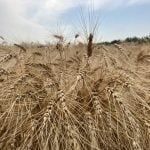Glacier FarmMedia—Grain futures at the Chicago Board of Trade (CBOT) are expected to decline after the United States Department of Agriculture (USDA) releases its prospective plantings and quarterly grain stocks reports on June 28.
Tom Lilja, market analyst and risk management specialist at Progressive Ag in Fargo, N.D. said recent price declines at the CBOT are indicating the trade is already accounting for increases in acres and supply.
“Based on the way the markets have been lower, you can make the argument the trade is expecting (acreage) to be higher,” he said. “We’ve had a rough couple of weeks with the market trading lower. It’s possible that could be factored in. We made new lows in December corn (on June 25). We made new lows in Minneapolis (spring wheat) as well.”
Read Also

U.S. livestock: Feeder cattle hit contract highs on tight supply
Chicago | Reuters – All Chicago Mercantile Exchange feeder cattle futures and most live cattle futures hit contract highs on…
Trade estimates suggested U.S. corn plantings will increase to 90.353 million acres on average, compared to the March estimate of 90.036 million. Soybean acres are also expected to expand by 243,000 acres from the March report at 86.753 million, while wheat area would be up by 159,000 acres at 47.657 million. However, only soybeans would see a yearly increase.
Meanwhile, grain stocks as of June 1 are very likely to rise from one year earlier with the trade’s average estimates at 4.873 billion bushels (up 770 million) for corn, 962 million (up 166 million) for soybeans and 684 million (up 114 million) for wheat.
Flooding in parts of the U.S. Northern Plains will reduce the number of harvested acres in the region, but because they’ve already been planted, there may not be too many effects on prices.
“My expectation is that corn acres would be lower, but that will not be reflected in this report. We won’t know the full extent of the acre question until this fall,” Lilja said.
He added that current price levels were similar to those in February and March, which marks a “crucial level of support.” Lilja believes the recent adverse weather and declining crop conditions could support grains.
“We’ve still got some summer weather ahead. (But there are also) some of the flooding stories we’ve been hearing about, we saw crop conditions decline about three points for corn and soybeans and we’ve seen declines in Minneapolis spring wheat by about five points,” Lilja said. “If the weekly ratings decline on (July 1), I would anticipate the market will hold these support levels.”
















